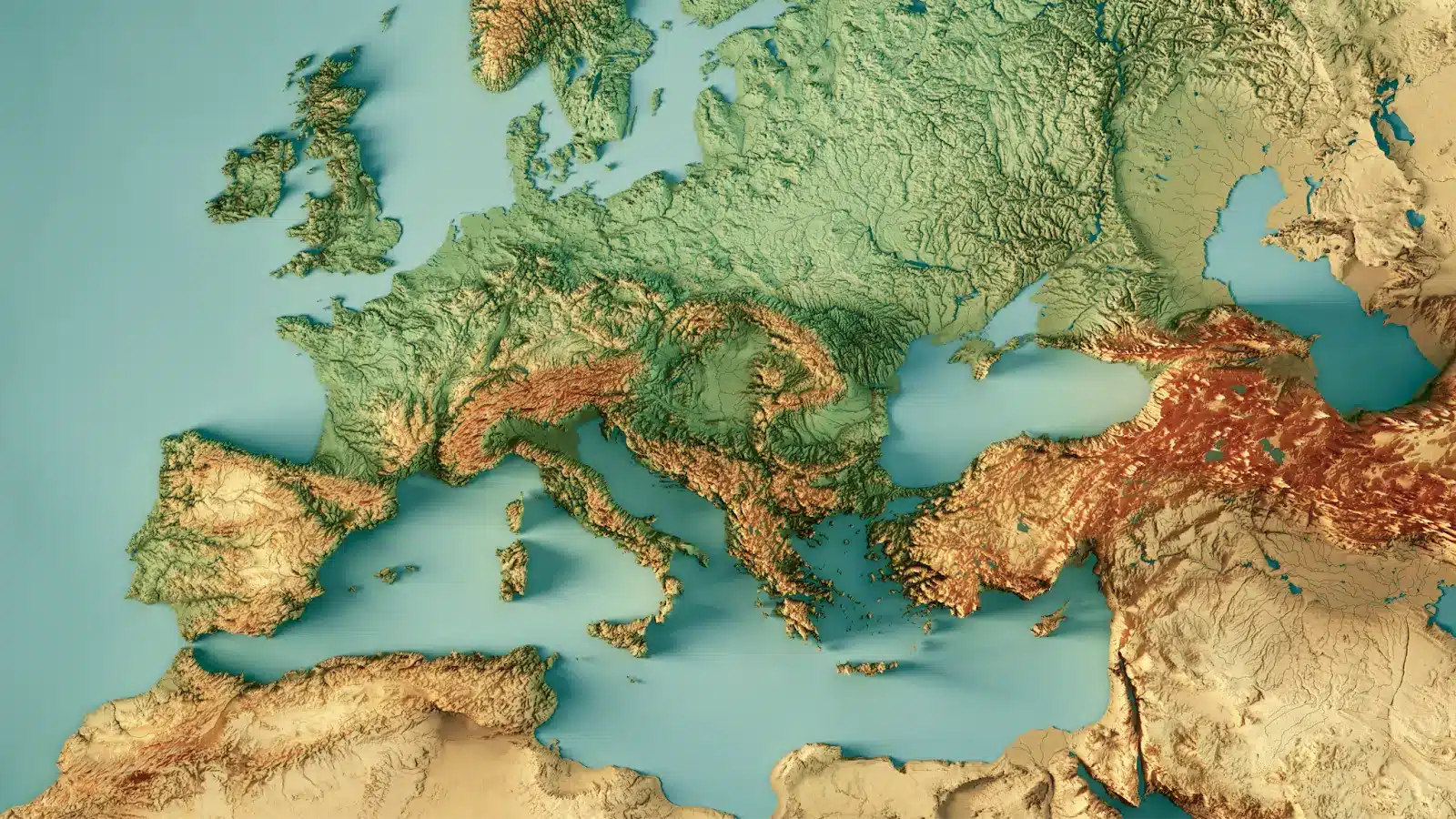About Messinian Event:
- Also known as the Messinian Salinity Crisis (MSC), the Messinian event was a geological event during which the Mediterranean Sea went intoa cycleof partial or nearly complete desiccation (drying up).
- It was one of the most severe ecological crises in the Earth’s history.
- The MSC began approximately 6 million years ago (MYA) and lasted until around 5.3 MYA.
How has it unfolded?
- It began when the connection between the Atlantic Ocean and the Mediterranean Sea was cut off.
- This occurred due to a combination of lowered sea levels in the global oceans and collision between the European and African plates that caused the land to lift.
- Normally, there is much more evaporation than precipitation over the Mediterranean Sea. This means that much more water is leaving than entering the sea.
- Without a significant source of water from the Atlantic Ocean, this led to the evaporation of much of the Mediterranean Sea.
- o A large underground canyon formed, and rivers made deep incisionsinto the bottom of the basin. This canyon was much larger than the Grand Canyon and had a depth of up to 2,000 meters (6562 feet).
- As the water in the Mediterranean evaporated, the salt that was in the water was left behind and began to build up in layerson the floor of the Mediterranean.
- Two major salts that were deposited on the floor were Halite and Gypsum. Some of the salt deposit areas were 800 meters (2,500 feet) deep.
- However, the salt in the Mediterranean did not deposit on the floor as quickly as the water was evaporating. This means that whatever water was left in the Mediterranean became very salty.
- This high amount of salt in the water (also known as salinity) caused the Mediterranean to become deadly to all marine life.
- The Mediterranean continued to dry up until there was almost no water left.
- It ended with the Zanclean flood, when the Atlantic reclaimed the basin.
What is a Deep-sea Canyon?
- Deep-sea canyons are steep-sided valleyscut into the seafloorof the continental slope, sometimes extending well onto the continental shelf.
- These submarine canyons vary in size, shape, and morphological complexity; some were scoured by the flow of rivers during past low sea level periods, but most formed viaother erosional processes, such as mud slides, debris flows, and turbidity currents.
Q1: What are the countries bordering the Mediterranean sea?
22 countries and one territory (Gibraltar – a British Overseas Territory) have coasts on the Mediterranean Sea. The European Countries are Spain, France, Italy, Malta, Monaco, Slovenia, Croatia, Bosnia and Herzegovina, Montenegro, Albania, and Greece. The West Asian (Middle Eastern) countries bordering the Mediterranean Sea are Turkey, Syria, Lebanon, Israel, the Palestine Gaza Strip and the divided island of Cyprus. Five North African nations have coasts on the Mediterranean Sea: Morocco, Algeria, Tunisia, Libya and Egypt.
Source:Israeli scientists find new underwater canyon near Cyprus
Last updated on June, 2025
→ UPSC Notification 2025 was released on 22nd January 2025.
→ UPSC Prelims Result 2025 is out now for the CSE held on 25 May 2025.
→ UPSC Prelims Question Paper 2025 and Unofficial Prelims Answer Key 2025 are available now.
→ UPSC Calendar 2026 is released on 15th May, 2025.
→ The UPSC Vacancy 2025 were released 1129, out of which 979 were for UPSC CSE and remaining 150 are for UPSC IFoS.
→ UPSC Mains 2025 will be conducted on 22nd August 2025.
→ UPSC Prelims 2026 will be conducted on 24th May, 2026 & UPSC Mains 2026 will be conducted on 21st August 2026.
→ The UPSC Selection Process is of 3 stages-Prelims, Mains and Interview.
→ UPSC Result 2024 is released with latest UPSC Marksheet 2024. Check Now!
→ UPSC Toppers List 2024 is released now. Shakti Dubey is UPSC AIR 1 2024 Topper.
→ Also check Best IAS Coaching in Delhi
























